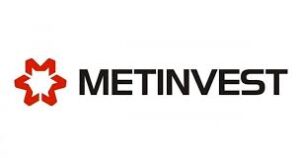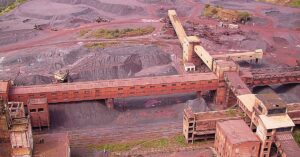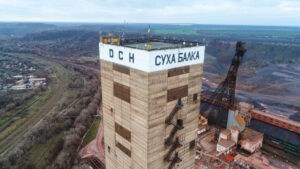
According to Metinvest Group’s annual report, in 2023 Metinvest’s revenue decreased by 11% to $7.397 bln by 2022, mainly due to lower steel, iron ore and coking coal selling prices, which were in line with global rates. Also, sales volumes of pig iron, slabs, flat and tubular products were affected by the war from the suspension of production at Mariupol steel mills. At the same time, Metinvest increased shipments of other products in its portfolio (primarily billets by 6%, long products by 28%, pellets by 70% and coking coal concentrate by 32%), as well as steel and coke resales on the back of higher production at Zaporizhstal.
A significant factor supporting iron ore sales in H2 2023 was the opening of the Black Sea corridor for sales to distant markets.
Also, Metinvest’s revenue in Ukraine grew by 14% to $2.628 bln mainly due to a recovery in demand for iron ore and coking coal, as well as for flat and long products.
In turn, the group has had to make profound changes to its business operations as it continues to strive for adaptability and resilience.
“We have adjusted our supply chain and are strengthening relationships with our suppliers and customers to withstand the current conditions. At the beginning of 2023, the company experienced significant challenges, particularly due to power outages. However, by implementing the necessary changes to respond to this crisis, we were able to achieve a gradual recovery of production,” states the CEO.
He emphasized that the resumption of Ukrainian commercial shipping in the Black Sea later in 2023 was an important moment for Metinvest, allowing to increase capacity utilization. “We are cautiously optimistic about this undoubtedly positive development, while recognizing the ongoing military threats,” the top manager added.
According to him, these developments have directly impacted the group’s financial performance, improving the situation and allowing us to focus on operational efficiency, flexibility and strategic planning for future growth.
“Metinvest remains committed to servicing its debt obligations, having repaid the remaining principal amount of the group’s 2023 bonds redeemed last year on time and in full, while maintaining its deleveraging approach, Ryzhenkov said.
“Although Metinvest has focused its investments in 2023 mainly on maintaining its assets, I firmly believe that we must start preparing for the future. Our ambitions have not diminished; we have laid the foundation for Steel Dream, our visionary vision for rebuilding Ukraine. Despite the war, our commitment to a green transformation strategy also remains unchanged. This vision embodies our determination not only to dream, but also to plan a pilot project on low-carbon steel technology in Italy,” summarized the CEO.
“Metinvest consists of mining and metallurgical enterprises located in Ukraine, Europe and the United States. Its major shareholders are SCM Group (71.24%) and Smart Holding (23.76%), jointly managing it.
COKING COAL, IRON ORE, METINVEST, PIG IRON, REVENUE, ROLLED PRODUCTS, slabs, STEEL

Sukha Balka mine (Kryvyi Rih, Dnipro region), part of Aleksandr Yaroslavsky’s DCH group, commissioned two longwalls for iron ore production in February.
According to a report in DCH Steel’s corporate newspaper on Thursday, miners at Yubileynaya Mine commissioned two new blocks that will ensure the company’s operation in the near future.
According to the approved plans for 2024, the commissioning of new facilities at Yubileynaya mine in February, two blocks were put into operation – 36-42, 3rd floor of the Gnezdo deposit and block 1-4 of the Main deposit at the 1420m horizon.
The total reserves of the two blocks amount to 332 thousand tons of ore.
Blocks 36-42 have already started producing crude ore, and mining in blocks 1-4, which contain about 220 thousand tons of ore, will begin next week.
The commissioning of the two blocks will ensure stable ore production at Yubileynaya mine for six months.
DMZ specializes in the production of steel, pig iron, rolled products and products made from them. On March 1, 2018, DCH Group signed an agreement to buy Dnipro Metallurgical Plant from Evraz.
Sukha Balka mine is one of the leading mining companies in Ukraine. It produces iron ore using an underground method. The mine includes Yubileynaya and Frunze mines. Frunze mine.
DCH Group acquired the mine from Evraz Group in May 2017.

In January this year, Ukrainian mining companies increased exports of iron ore in physical terms by 3.36 times compared to the same period last year, up to 3 million 115.839 thousand tons from 927.433 thousand tons.
According to the statistics released by the State Customs Service on Friday, during the period under review, foreign exchange earnings from the export of iron ore increased by 2.7 times to $295.989 million from 110.857 million.
Exports of iron ore were carried out mainly to China (48.05% of supplies in monetary terms), Slovakia (13.65%) and Poland (10.48%).
Last month, Ukraine imported iron ore worth $7 thousand in a total volume of 9 tons, while in January-2023 it imported iron ore worth $1 thousand in a volume of 1 thousand tons. Imports in January-2024 came from Italy (100%).
As reported, in 2023, Ukraine decreased exports of iron ore in physical terms by 26% compared to 2022 – to 17 million 753.165 thousand tons, foreign exchange earnings from iron ore exports amounted to $1 billion 766.906 million (down 39.3%). Iron ore was exported mainly to Slovakia (28.39% of supplies in monetary terms), the Czech Republic (19.74%) and Poland (19.56%).
Last year, Ukraine imported iron ore worth $135 thousand in the total amount of 250 tons. During this period, imports were made from Norway (34.81%), Italy (28.89%) and the Netherlands (28.89%). While in 2022, iron ore was imported for $65 thousand in a total volume of 101 tons.
In 2022, Ukraine decreased exports of iron ore in physical terms by 45.9% compared to 2021 – to 23 million 984.623 thousand tons, while foreign exchange earnings decreased by 57.8% to $2 billion 912.974 million. Iron ore was exported mainly to Slovakia (19.23% of supplies in monetary terms), the Czech Republic (17.32%) and Poland (16.49%).
In 2022, Ukraine imported iron ore worth $65 thousand in a total volume of 101 tons, while in 2021 – $184 thousand in a volume of 1,202 thousand tons. Imports were carried out from Norway (36.92%), the Netherlands (27.69%) and the UK (16.92%).

In January-November this year, Ukrainian mining companies reduced exports of iron ore in physical terms by 30.5% year-on-year to 16 million 145,920 thousand tons.
According to the statistics released by the State Customs Service (SCS), foreign exchange earnings from iron ore exports amounted to $1 billion 624.403 million (down 42.8%) in the period under review.
Iron ore was exported mainly to Slovakia (28.73% of supplies in monetary terms), Poland (20.20%) and the Czech Republic (20.18%).
In January-November of this year, Ukraine imported iron ore worth $131 thousand in the total volume of 244 tons. Imports during this period came from Norway (35.88%), the Netherlands (29.77%) and Italy (26.72%). At the same time, during the same period in 2022, iron ore worth $62 thousand was imported in a total volume of 96 tons.
As reported, in 2022, Ukraine decreased the export of iron ore in physical terms by 45.9% compared to 2021 – to 23 million 984.623 thousand tons, while foreign exchange earnings decreased by 57.8% to $2 billion 912.974 million.
Iron ore was exported mainly to Slovakia (19.23% of supplies in monetary terms), the Czech Republic (17.32%) and Poland (16.49%).
Last year, Ukraine imported iron ore worth $65 thousand in a total volume of 101 tons, while in 2021 – $184 thousand in a volume of 1,202 thousand tons.
Imports were carried out from Norway (36.92%), the Netherlands (27.69%) and the UK (16.92%).

In January-September this year, Ukrainian mining companies reduced exports of iron ore by 40.8% in physical terms compared to the same period last year, to 12 million 644.570 thousand tons.
According to the statistics released by the State Customs Service (SCS), foreign exchange earnings from iron ore exports amounted to $1 billion 323.212 million (down 50.4%) in the period under review.
Iron ore was exported mainly to Slovakia (29.33% of supplies in monetary terms), the Czech Republic (22.58%) and Poland (19.83%).
In January-September of this year, Ukraine imported iron ore worth $86 thousand in the total amount of 126 tons. Imports during this period were made from Norway (41.18%), Italy (34.12%) and the Netherlands (23.53%). At the same time, in the same period of 2022, iron ore worth $27 thousand was imported in a total volume of 49 tons.
As reported, in 2022, Ukraine decreased the export of iron ore in physical terms by 45.9% compared to 2021 – to 23 million 984.623 thousand tons, while foreign exchange earnings decreased by 57.8% to $2 billion 912.974 million.
Iron ore was exported mainly to Slovakia (19.23% of supplies in monetary terms), the Czech Republic (17.32%) and Poland (16.49%).
Last year, Ukraine imported iron ore worth $65 thousand in a total volume of 101 tons, while in 2021 – $184 thousand in a volume of 1,202 thousand tons.
Imports were carried out from Norway (36.92%), the Netherlands (27.69%) and the UK (16.92%).

Sukha Balka mine (Kryvyi Rih, Dnipropetrovs’k region), part of Aleksandr Yaroslavsky’s DCH Group, commissioned a new iron ore mining unit at Yubileynaya mine on 17 August this year.
According to the corporate newspaper DCH Steel, the subsoil will be developed in the traditional way.
It is specified that the new block 122-128 is located in the Main deposit on the fifth floor of the minus 1420 m horizon of the Yubileynaya mine. Its reserves amount to about 166 thousand tons. The average iron content is 58.88%.
Mining will be carried out by the miners of the No. 10 section.
The new block is expected to be developed by the end of this year.
Sukha Balka mine is one of the leading mining companies in Ukraine. It produces iron ore by underground mining. The mine includes Yubileynaya and Frunze mines.
DCH Group acquired the mine from Evraz Group in May 2017.